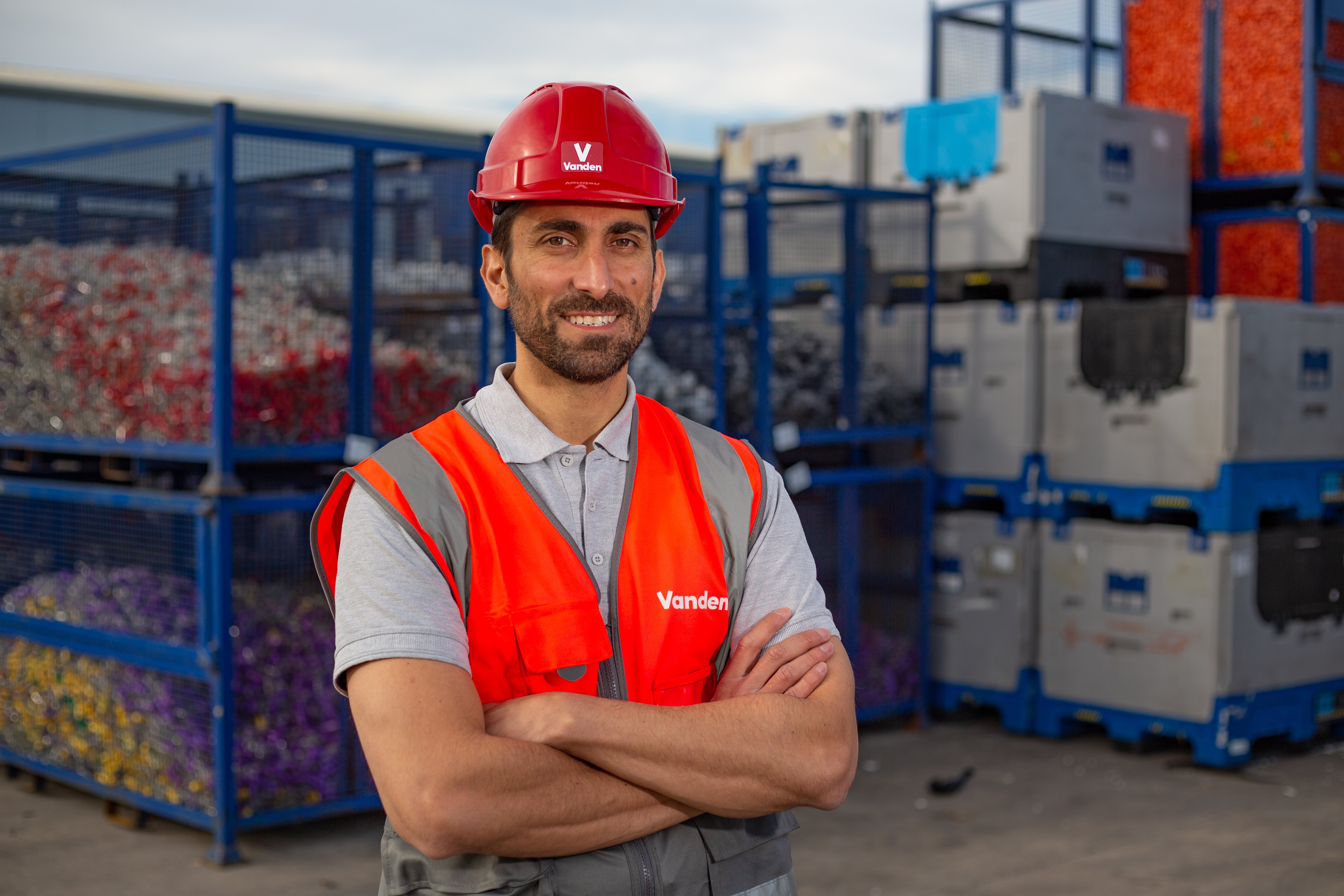Outside of the plastic manufacturing and plastic recycling industries, there is little knowledge of the circular economy and the journey that plastic takes once it has entered the recycling process. It’s this lack of knowledge that has led to the ‘war on plastics’, and the negative public perception of the material.
Rather than recycling merely being a way to put waste material to use elsewhere, recycling (and plastic recycling in particular) is the process of manufacturing new products that are not only purposeful, but highly valuable.
In this post, we will shed light on the route polymers take once they have reached end of life in their current form…
Where does the plastic go once it leaves Vanden’s recycling facility?
Vanden Recycling are proud of have a physical presence and dedicated team in the following locations:
- UK
- Ireland
- Hong Kong
- Finland
- Turkey
- UAE
- Australia
You can learn about the Vanden family on our Meet the Team page.
This global footprint means we can remain close to the local markets and respond quickly as these markets change.
However, due to our reputation for offering a quality service that is traceable, transparent and fully compliant, we also supply plastic material to a number of other countries, actively helping to build a global circular economy.
We have long-standing relationships with clients in countries such as Belgium, France, Italy, Germany, Czech Republic, Poland, Spain and Portugal that send Vanden scrap material, or use our reprocessed plastic to re-enter the supply chains in a variety of sectors, including packaging, automotive, furniture and household goods.
We envisage that as the design process begins to encompass the end use of a product, we will begin to see supply chains align and more plastic enter the circular economy time and time again.
How is plastic recycled?
Our dedicated plastic recycling facility receives large volumes of different grades of plastic, including, but not limited to:
- PET
- PP
- HDPE
- LDPE
- PVC
- PS
For a full list of the polymers we trade in and recycle, please visit our buying and selling plastic page.
Step one of the plastic recycling process
Once plastic enters our site, each load is inspected to identify its type and grade. A bar-coded sticker is then applied, allowing us to trace the load through the recycling process.
The sticker includes information such as the origin of the material, details of the aforementioned type and the grade of polymer, along with the date and time of its arrival.
This information allows us to trace each load during its time on the site, and onto to the next stage where it re-enters the supply chain. This means we can provide solid evidence for our customers’ auditing and compliance purposes – and also means we can verify that we are continuing to behave in a responsible, trustworthy and ethical way.
To prevent contamination, and ultimately the devaluing of the material, our facility adheres to a strict ‘dedicated’ line policy: this means that each of our four lines is exclusively responsible for processing and granulating specific polymer types.
Step two of the plastic recycling process
The material is unloaded, sorted and approved for the production line, by hand – ensuring there is no contamination. Where required, destruction of the material is guaranteed.
Step three of the plastic recycling process
Next, the material moves into the production hall to be purified, granulated (subject to the polymer and requirements), de-metalized and dedusted.
Vanden Recycling has invested heavily into the equipment that we use, meaning we can be sure that the reprocessed plastic we produce is pure.
Step four of the plastic recycling process
Every batch of reprocessed material is tested by our quality control department.
We use a variety of testing methods such as the sink/float method, MFI (melt flow index) reading, oven testing and IV testing. The method of testing used will be specific to the polymer type and will determine the purity and grade of the material, while also identifying any contaminants or barrier layers.
To learn more about contaminants, barrier layers and other terminology used in this blog, you can visit our Plastic Recycling Glossary.
This extensive approach to ensuring the material we send out is graded correctly and contaminant free means we can ensure it re-enters the supply chain and is diverted from landfill or incineration.
To learn more about the testing methods that we use, you can watch our Quality Control playlist on Vanden’s YouTube channel.
Vanden Recycling is a crucial link in providing industries around the world with solutions that empower and enable them to recycle scrap plastic, building sustainable supply chains and a circular economy. To speak to a member of the team about our plastic recycling solutions, you can contact us here.






Tell us what you think...